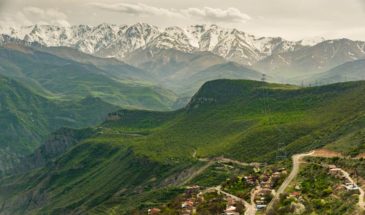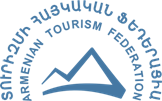- Overview
- Trip Outline
- Trip Includes
- Trip Excludes
- Gallery
- FAQ
Upon arrival at Zvartnots International Airport, travelers are escorted to a centrally located hotel in Yerevan for their overnight stay. The journey continues with a comprehensive Yerevan city tour, showcasing landmarks such as the Republic Square, the Cascade, and the Cafesjian Center for the Contemporary Arts. The exploration delves into Armenia's rich heritage with a visit to Matenadaran, housing an extensive collection of ancient manuscripts, followed by a trip to the spiritual center of the Armenian Apostolic Church at St. Echmiadzin, and the ruins of the Zvartnots temple, a UNESCO World Heritage Site, capped off with a cultural dining experience.
The next phase of the adventure takes travelers to the Aragatsotn region, known for its agricultural significance, where they visit the 13th-century Aruch Caravansarai and engage with local artisans. Highlights include a master class in baking traditional lavash bread, a UNESCO Intangible Cultural Heritage, and a visit to the 7th-century Katoghike Cathedral in Talin, before heading to Gyumri. In Gyumri, travelers explore the city's rich cultural history, dating back to the 8th century BC, and enjoy dinner at a fish farmer's restaurant, followed by an overnight stay.
The final leg of the journey involves a visit to a painter in Hatsik village, exploring medieval Armenian architecture at Marmashen monastery, and concludes with a lunch before transferring to the Armenian-Georgian border at Bavra, wrapping up a memorable exploration of Armenia's cultural and historical landscapes.
No details found.
Itineraries
Day 1
Meeting at Zvartnots International Airport
Transfer to a centrally located hotel. Overnight.
Day 2
Yerevan City Tour – Matenadaran - Echmiadzin - Zvartnots – Yerevan. Overnight
Breakfast at the hotel. Yerevan sightseeing, including City centre, Republic Square, City panorama, Cascade – an open-air museum, with The Cafesjian Center of the Contemporary Arts, Parliament, President’s Palace, the Opera House. Visit to Matenadaran, a repository of ancient manuscripts, research institute and museum which is in possession of a collection of nearly 17,000 manuscripts and 30,000 other documents which cover a wide array of subjects such as historiography, geography, cosmography, philosophy, grammar, art history, medicine and science. Drive to St. Echmiadzin – the administrative center of the Armenian Apostolic Church. Lunch in a cultural center of handmade carpets, traditional Armenian costumes and paintings, meeting with artists. Visit to the Cathedral of St. Echmiadzin and Zvartnots temple, a ruined seventh century circular Armenian cathedral (641-653) – another UNESCO World Heritage Site. Return back to Yerevan. Dinner at a traditional restaurant with musicians.
Overnight at the hotel.
Day 3
Yerevan – Caravansarai Aruch - Ashnak -Talin – overnight in Gyumri
Breakfast at the hotel. Departure to Aragatsotn region which is the major agricultural region of Armenia and visit to Aruch Caravansarai (13th century). In Armenia Caravanserai served as hotels for the salesmen in medieval times. Meeting with an artist who made traditional Armenian puppets and costumes. Master class of baking the traditional bread lavash, which is inscribed in the UNESCO Representative list of the Intangible Cultural Heritage of Humanity . Lunch with a local family. Stop at Talin and visit the Katoghike Cathedral (7th century). Following to Shirak region and arrival at Gyumri, the capital of Shirak region, the second largest city in Armenia. The region of Gyumri is mentioned as Kumayri in the historic Urartian inscriptions dating back to the 8th century BC. In 19-20 centuries Gyumri were the cultural capital of Armenia. Discover the city and dinner in a fish farmer’s restaurant. Overnight at the hotel.
Day 4
Gyumri - Hatsik-Marmashen - Armenian -Georgian border (Bavra)
Breakfast at the hotel. Visit a painter living at the Hatsik village. Meeting with her family. Drive to Marmashen monastery, where the inscription on the south wall of the main church informs us that it was built between 986 and 1029 by Prince Vahram Pahlavouni- Armenian army commander and the head of the Nobel family Pahlavouni. Discover details of medieval Armenian architecture.
Lunch and transfer to the Armenian-Georgian border Bavra.
Accommodation at a centrally located hotel
Breakfasts
Transportation by an air-conditioned vehicle
Professional English-speaking guide
Entrance tickets
Extra meal
No Details Found








